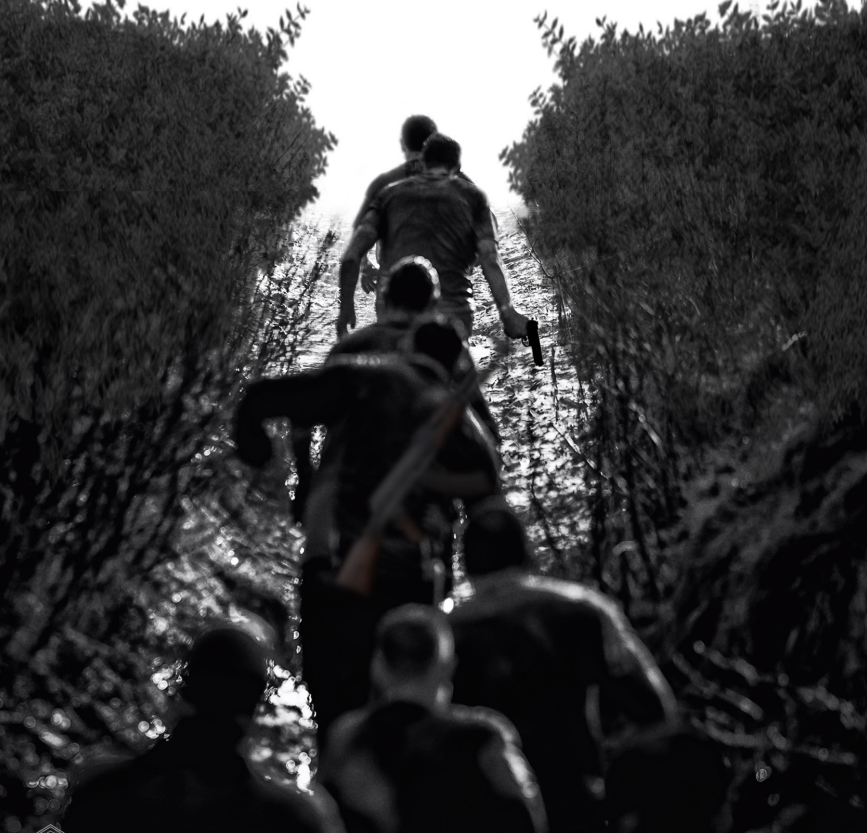One of the most effective ways to decide the outcome of an engagement is to study and use the terrain to channel your enemy into an exposed position, thus giving you a tactical advantage.
When planning your castle, you may or may not have the luxury of an army of strong-backed men or large stone walls perched upon ramparts that meet a deep, murky moat. More than likely, you’re like me, trying to come up with an effective way to channel a trespasser using the average home landscape into an area where a proper and pre-determined outcome can be expected. And also, not freaking my wife out with rolls of razor wire and Hesco barriers.
Landscaping for Channeling
In many ways, modern homes that are professionally landscaped may already have a taste of this channeling methodology: gated driveways or a picket fence around the front of the house with a lighted pathway to the front door. On the sides, where bedrooms on bottom floors are usually located, sharp, prickly holly bushes are neatly trimmed, preventing even a heavily dressed lurker from evading painful and itchy wounds.
On the front of the house, stiff-branched laurel bushes that, when well kept, can create an impenetrable wall, forcing anyone approaching to march right up the front stairs rather than on an oblique up and over the deck railing. So, why does this work?

The Path of Least Resistance
Nature chooses the path of least resistance. Humans, animals, and pretty much anything that grows or flows will move towards the lowest gravity or downstream, gently meandering around obstacles. There is a scientific definition for this within the second law of thermodynamics, but I think mine is easier to understand.
Some of the most successful hunters I’ve known believed that the harder it was to get to a location, the better the hunting. They purposely bypassed the path of least resistance, tromping through briars, swamps, or over nearly impassable rocky terrain to find game. The game wasn’t expecting that, and they are incredibly successful.
The point is, there are those out there that will take the extra effort to avoid a possible pitfall, so be mindful of your blind spots.
Time
There is one thing that may be working against you in terms of using landscaping for channeling, and that is time. It takes time to grow and create a good stand of vegetation. I planted some barrier evergreens that were measured about six feet in height and planted fifteen feet apart in 2009. These plants just in the last few years grew to top twenty feet and have closed the fifteen-foot gap completely.
Much can happen in ten years; this is the time when you talk to a landscaper. Find out what plants or trees do well in your region and know the growth rate to better understand what you will be working with a year or more down the road.

If, like me, you have stands of hardwoods, it is easy to transplant some type of briars such as blackberry bushes under the canopy that will do quite well. I would crawl through hell before blackberry bushes. I was recently repairing a fence in a pasture and noticed some type of thorny briers had grown over the fence in just a year. The fence was nothing more than barbed wire strung over steel fence posts. I remember thinking about how it would be cheap and easy to install this with a few transplants of these vines in the winter, and it would be a worthy barrier in a year.
Final Thoughts
Moving forward, when starting to look at your yard with the intent of using shrubs or landscape features, don’t for a minute think that this method of security is a first, or out-of-left-field idea by a bunch of tin-foil hat crazies. Cultures have been using the landscape and terrain to channel an enemy for as long as recorded human history.
A few years ago, I was doing a patrol through a village with an element of foot soldiers from a small East African country. As we were in a tactical column moving into the village, I was surprised that even though the roads were dirt, the roofs of the huts were straw, and the walls of the homes made of mud and dung, each property had a stand of eight-foot hedges full of those four-inch thorns so prevalent in Africa, perfectly trimmed surrounding each yard with only a narrow front and rear entrance.
My interpreter commented that he hated working these villages because of the hedges and the way they forced the troops into small bottlenecks. No water, no electricity, not a single toilet, but they still understood the value of using natural barriers to channel visitors into a very small area. If our intent was of ill will, that might have been a fight we very well may have lost.
This article was originally published in Survival Dispatch Insider magazine Volume 4 Issue 6.
=====
Become a Survival Dispatch Insider …
We bring together survival enthusiasts and preppers to share skills and knowledge, so you can enhance your preparedness for emergencies and ensure the safety of you and your community.
The Results You’ll Get …
Our community, courses, and memberships are pretty special. We’re focused on the ways it will make a huge difference in your life.
Here are a few of the things you’ll be able to do as a member of Survival Dispatch Insider …
1) Improve your emergency preparedness by learning survival skills and strategies from experienced preppers.
2) Build lasting connections with like-minded individuals that share your passion for safety and readiness.
3) Access a wealth of knowledge and resources to assist in protecting you and your community during unexpected situations.
Click HERE to get started.
=====
